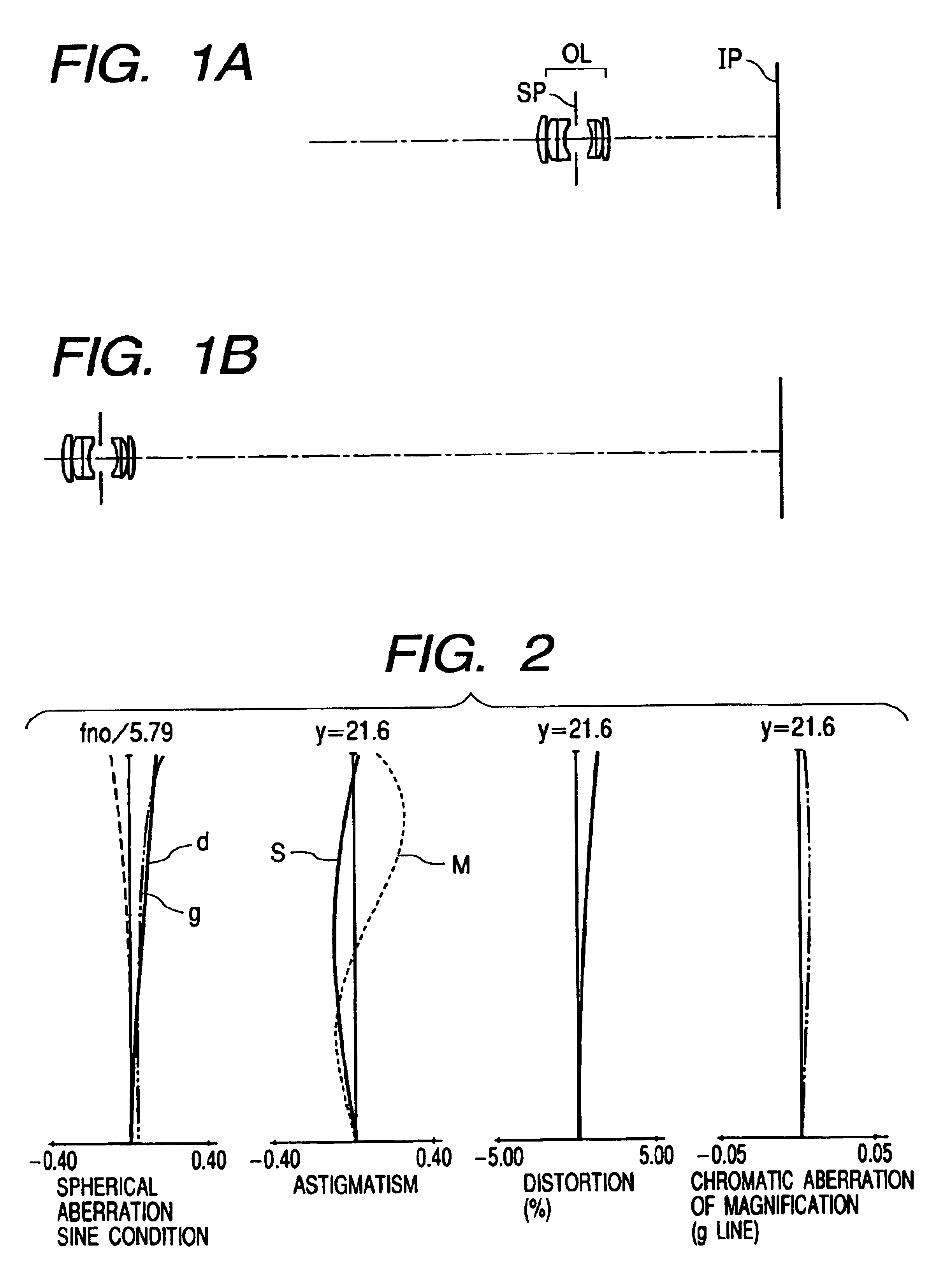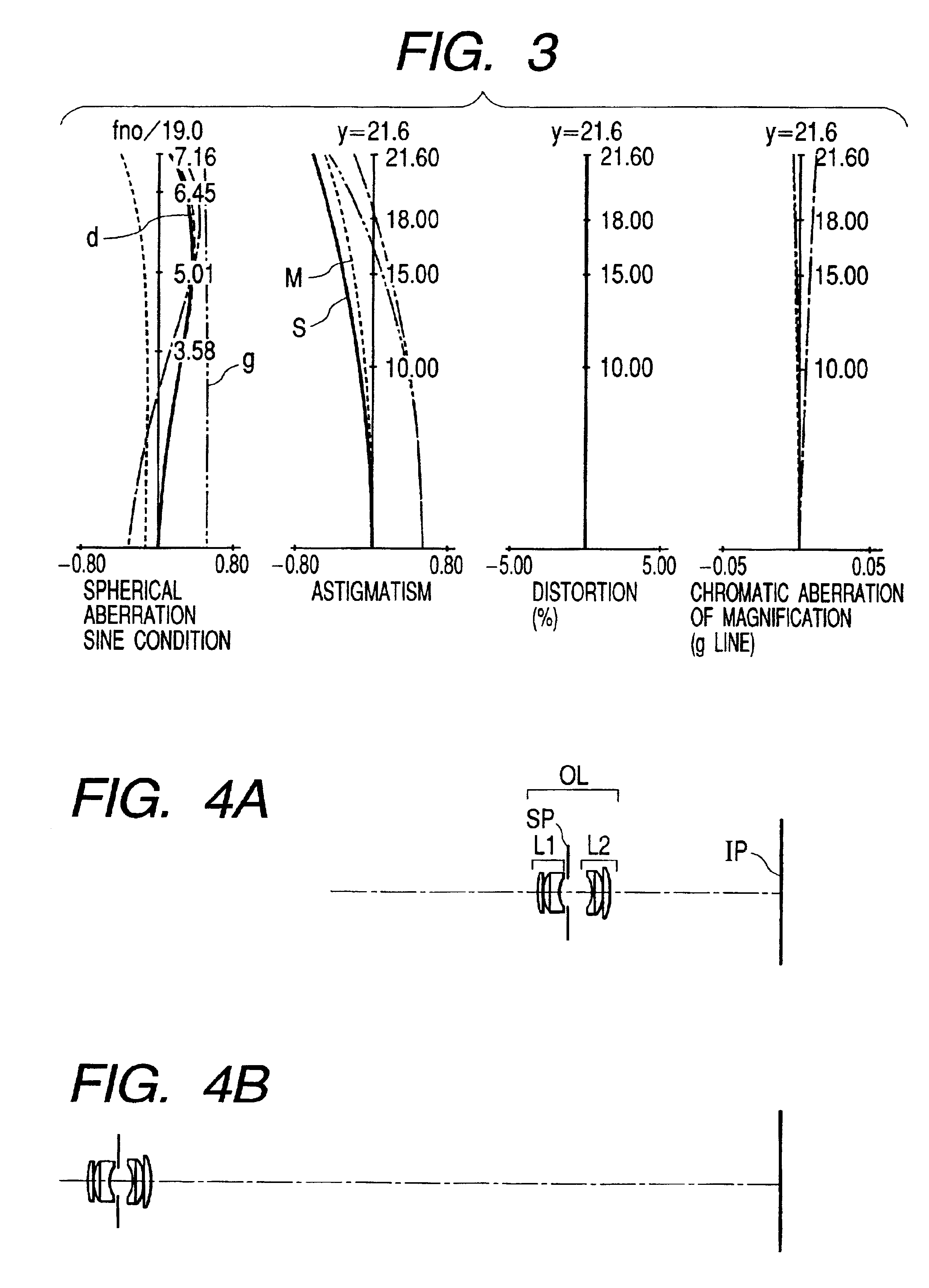Lens system and optical device having the same
a technology applied in the field of optical system and optical device, can solve the problems of difficult to correct well, more aberration, and inability to achieve good optical performance, and achieve the effect of high optical performan
- Summary
- Abstract
- Description
- Claims
- Application Information
AI Technical Summary
Benefits of technology
Problems solved by technology
Method used
Image
Examples
first embodiment
[0245]The first embodiment of FIGS. 1A and 1B will be described first.
[0246]In general, the macrolenses increase their axial chromatic aberration and chromatic aberration of magnification with increase in the photographic magnification. Particularly, concerning the photographic magnification, the use of the diffracting optical element in the range of Eq (1) is significantly effective in correction of chromatic aberration. The upper limit of the photographic magnification β is preferably set to approximately β=10 in terms of correction of aberration.
[0247]The conditions of C12>0 are conditions for well correcting spherical aberration, in which the condition of C12>0 means that positive refracting powers become gradually weaker toward the periphery. Namely, the condition of C12>0 is a condition for canceling insufficiently corrected, relatively high-order spherical aberration (ring spherical aberration), which the lens units similarly have intrinsically. The ranges outside these condi...
second embodiment
[0249]The second embodiment of FIGS. 4A and 4B will be described next.
[0250]The use of the diffracting optical element facilitates the correction for the axial chromatic aberration and chromatic aberration of magnification during photography at high magnifications and, particularly, coma is effectively corrected by changing the spacing between the focusing units before and after the stop during the focusing to the near object.
[0251]The conditions of C12>0 are conditions for correcting spherical aberration well and the technical meanings described in the first embodiment also apply similarly to the present embodiment.
[0252]Condition (3) is a condition concerning the ratio of moving distances of the first lens unit and the second lens unit during focusing. When the ratio of moving distances of the first lens unit and the second lens unit becomes smaller than the lower limit, correction is insufficient for the spherical aberration and it also becomes difficult to correct coma.
[0253]Whe...
third embodiment
[0259]The third embodiment of FIGS. 7A and 7B will be described next.
[0260]The use of the diffracting optical element facilitates the correction of the axial chromatic aberration and chromatic aberration of magnification during photography at high magnifications. The spacing is increased between the front group of the positive lens units (the first, second, and third lens units) and the rear group of the negative lens unit (the fourth lens unit) during focusing to the near object to increase the power of the entire system, which is advantageous, because the feed lengths can be decreased as compared with the whole system feeding method. Further, the front principal point can be placed closer to the object by the layout of positive and negative refracting powers as a whole, which is also advantageous in ensuring the longer working distance. Changing the spacing between the first lens unit and the second lens unit is effective, particularly, in correction of coma.
[0261]The conditions o...
PUM
 Login to View More
Login to View More Abstract
Description
Claims
Application Information
 Login to View More
Login to View More - R&D
- Intellectual Property
- Life Sciences
- Materials
- Tech Scout
- Unparalleled Data Quality
- Higher Quality Content
- 60% Fewer Hallucinations
Browse by: Latest US Patents, China's latest patents, Technical Efficacy Thesaurus, Application Domain, Technology Topic, Popular Technical Reports.
© 2025 PatSnap. All rights reserved.Legal|Privacy policy|Modern Slavery Act Transparency Statement|Sitemap|About US| Contact US: help@patsnap.com



